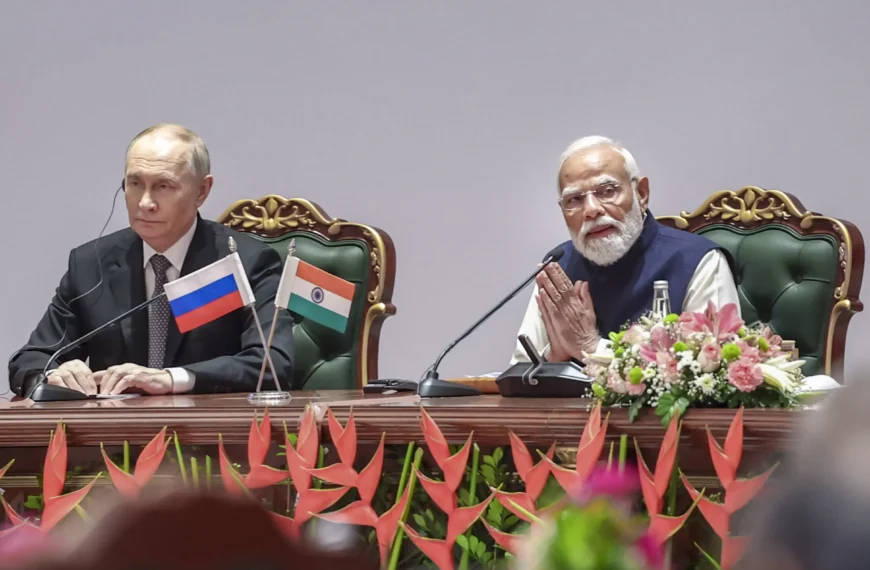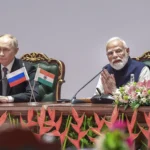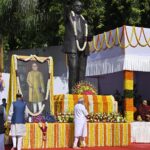Reg No. - CHHBIL/2010/41479ISSN - 2582-919X
History of China-Pakistan alliance and conspiracies: Plenty of conspiracies against India… Re-evaluation of the Dragon is necessary

India China and Pakistan – Photo- c24 Print- Graphics
To understand the story behind keeping cross-border terrorism out of the joint statement at the recent SCO meeting, one has to look into the history of the Pakistan-China alliance, which is full of conspiracies against India. It is important for India to keep re-evaluating Chinese activities and attitude.
India faced another contradiction in the field of global diplomacy. When terrorism was excluded from the joint statement in the recent meeting of the Shanghai Cooperation Organization (SCO), India flatly refused to support it. The main reason for this was that the incident of attack on Indian tourists by Pakistan-sponsored terrorists in Pahalgam was not mentioned in it, for which the responsibility was taken by the Pakistani affiliate of Lashkar-e-Taiba.
The SCO was founded in 2001 by China, Kazakhstan, Kyrgyzstan, Russia, Tajikistan and Uzbekistan. India and Pakistan joined it in June 2017, Iran in July 2023 and Belarus in July 2024. Many countries are included in it as observers or dialogue partners, but China wants to maintain its dominance in the Eurasian region. The headquarters of the SCO Secretariat is also in Beijing. A permanent organ of the SCO is the Regional Anti-Terrorism Structure (RATS), which is expected to promote cooperation among member countries against the three evils of ‘terrorism, separatism and extremism’. Surprisingly, when China was informed about the Pahalgam terror attack, the Chinese ambassador in Delhi only shed crocodile tears. But Beijing expressed regret over the military action taken by India during Operation Sindoor. Far from punishing Pakistan, China even helped Pakistan escape criticism during discussions at the United Nations.
At the SCO Defence Ministers’ meeting, the Indian Defence Minister met his Chinese counterpart and stressed the need to ‘bridge the mistrust gap created after the 2020 border standoff by taking action on the ground’. The Indian Defence Ministry assured the country that the two ministers ‘agreed to hold discussions at various levels.’ But can this resolve the fundamental issues of dispute between the two countries? This puzzle arises when we recall the astonishing advice of a former Indian foreign secretary that ‘India should assume that China negotiates to deceive.’ And this was from a man who is considered an expert on Chinese affairs and who has served as India’s ambassador to China. Did he share his perceptions with his political masters?
A study published in the Strategic Analysis journal of the Institute for Defence Studies and Analyses clearly states that the Chinese declaration of claims to about 50,000 square miles of Indian territory since 1950 was based on unofficial and privately published maps, known as the Xin Pao maps. Clearly, the Indian governments that have come to power have not been successful in thwarting China’s intentions, but have been welcoming to Chinese leaders despite periodic violations. The Pakistan-China nexus has a history. When Pakistan voted to give China a seat in the United Nations, China withdrew the maps disputed by Pakistan in January, 1962 and agreed to engage in border talks in March, 1962. An agreement was signed between the two countries on March 2, 1963. While these actions were taking place, India was suffering from a war waged across the Indian border by Chinese troops.
Under this agreement Pakistan ceded about 5,300 sq km (2,050 sq mi) of territory to China, over which it had no right, as these were Indian territories. In return Pakistan got the area known as Gilgit-Baltistan. Gilgit-Baltistan is a part of the former princely state of Jammu and Kashmir, which is an ‘integral part of India.’ Thus a double conspiracy was hatched and executed. The American Times wrote clearly on this matter in 1963 that Pakistan had ‘further diminished the hopes of a solution’ of the Kashmir problem, because under this Sino-Pakistan Agreement, Pakistan’s control over a part of northern Kashmir was recognised by China. The true nature of this expansionist conspiracy came to light when Pakistan was seen approving foreign mountaineering expeditions to the Siachen Glacier, which amounted to drawing a false conclusion from the decisions of the Karachi Agreement signed by the military commanders of India and Pakistan in the presence of United Nations military observers on July 27, 1949.
According to the letter and spirit of the agreement, NJ 9842 is the northernmost demarcated point on this ceasefire line, from where it was to proceed northwards to the glaciers. Pakistan mistook it as the last point on the Karakoram Pass and considered all the areas in that enclave as its own territory. When this bluff was exposed, the Indira Gandhi government launched a military operation and foiled the Sino-Pakistani conspiracy. But India cannot lower its guard against an expansionist enemy who is eyeing the Indian base at Daulat Beg Oldie, 30 kilometres away in the Depsang Plains. This is a strategic border, which will give them access to the road being built under CPEC and which passes through the territory ceded by Pakistan. This is the main reason why India is not joining the ‘One Belt One Road’ plan being pursued by China. The Indian government must re-evaluate its conclusions about Chinese activities, stance and attitude and take any decision keeping the bigger picture in mind.










